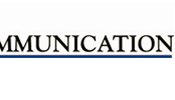

|
|
| Learn what to say... and what NEVER to say! |
|
|
Our PIE Model of Communication
|
Effectively Opening a Patient Interview: Create Comfort from the Start By Edward Leigh, MA The first few seconds of meeting a patient are critical to establishing rapport, helping the patient feel at ease and setting the tone of the interview. Wash your hands both before AND after seeing each patient. Many healthcare professionals prefer to wash their hands in front of the patient so the patient does not have to worry that they will pick up the previous patient’s germs. These are guidelines to beginning an interview with patient: Take a Deep Breath. During a busy day, you will develop a fast pace and your patients may pick up on that in your actions and voice. Taking a quick deep breath will relax you and prepare you for your next patient. Knock at the Door. After a tap on the door announcing your presence, wait for the patient’s response. Do not just immediately open the door. Most clinicians knock and immediately walk in, however it is best to knock and wait until you hear a response and then enter. This only takes a few seconds. Patient’s Name
Shake hands, if you feel this is appropriate for the patient. According to a recent article in the Archives of Internal Medicine, most patients want physicians to shake their hands when they first meet. The article dealt with physicians, however the shaking hands gesture would most likely apply to other healthcare professionals. Acknowledge others in the room, such as a family member or friend. Be sure to get their names. Shake their hands if appropriate. This acknowledgment is very important since you want to create a positive image with these family members as they will play key roles in the patient’s compliance. Start with an open ended question. This includes the question, "What brings you here today?" Let the patient talk for at least a minute before asking questions. By following these suggestions, patients will feel comfortable and ready share medical information. An effective start translates into an effective interview! |
The Center for Healthcare Communication • P.O. Box 18819 • Cleveland, Ohio 44118-0819 USA Site designed by I Am Orange Media Group |